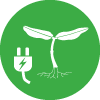- Sanitation systems
- Toilets with urine diversion
- Urine Diversion in Practice: Lessons from Sweden's Path to Sustainable Sanitation Urine diversion (UD)
Urine Diversion in Practice: Lessons from Sweden's Path to Sustainable Sanitation Urine diversion (UD)
194 views
- Kapaluseleji
-

- Environmental health technologist
Less- Posts: 17
- Likes received: 2
Re: Urine Diversion in Practice: Lessons from Sweden's Path to Sustainable Sanitation Urine diversion (UD)
Thank you for sharing this well-articulated reflection on Sweden’s experience with urine diversion and its broader implications for sustainable sanitation. Your summary highlights an essential truth: while the technology behind urine diversion is mature and promising, its long-term success ultimately depends on people, institutions, and the strength of collaborative networks.
Environmental health technologist 🦺
K.seleji
K.seleji
Please Log in to join the conversation.
You need to login to reply- BennyChabalaFilumba
-

- Public Health and WASH professional passionate about youth engagement, sanitation learning, and collaborative problem-solving. I enjoy supporting communities and practitioners through active moderation, capacity building, and impactful communication.
Less- Posts: 25
- Likes received: 12
Re: Urine Diversion in Practice: Lessons from Sweden's Path to Sustainable Sanitation Urine diversion (UD)
Hi Lucky,
Really appreciate this breakdown.
Sweden’s story makes one thing clear: urine diversion only works when people are genuinely brought into the process.
The tech helps, yes, but the real turning point came from listening to communities, getting different sectors to work together, and treating sanitation as part of the food system, not a separate world.
When those pieces line up, UD stops feeling like an experiment and starts becoming a practical, circular solution.
A simple but powerful reminder of what real progress looks like.
Kind regard,
Benny
Really appreciate this breakdown.
Sweden’s story makes one thing clear: urine diversion only works when people are genuinely brought into the process.
The tech helps, yes, but the real turning point came from listening to communities, getting different sectors to work together, and treating sanitation as part of the food system, not a separate world.
When those pieces line up, UD stops feeling like an experiment and starts becoming a practical, circular solution.
A simple but powerful reminder of what real progress looks like.
Kind regard,
Benny
Please Log in to join the conversation.
You need to login to reply- Luckymwaanga11
-
Topic Author
- User
Less- Likes received: 1
Urine Diversion in Practice: Lessons from Sweden's Path to Sustainable Sanitation Urine diversion (UD)
Urine Diversion in Practice: Lessons from Sweden's Path to Sustainable Sanitation Urine diversion (UD)
Sustainable Sanitation Urine diversion (UD)is increasingly recognized as a promising pathway toward sustainable wastewater management and nutrient recovery. By separating urine at the source, UD enables the capture of nitrogen, phosphorus, and potassium nutrients essential for agriculture that would otherwise be lost in conventional treatment systems. The approach closes the loop between sanitation and food production, aligning strongly with the principles of a circular economy and resource recovery.
Moving Beyond Technology: The Human Element While Sweden is often cited as a pioneer in urine diversion, the country's experiences reveal that technology and supportive policies alone are not sufficient to guarantee success. Initial UD projects benefitted from progressive environmental regulations and incentives encouraging nutrient reuse. However, their long-term success has varied widely across regions. What stands out is the human and institutional dimension of sanitation innovation. Projects that succeeded most were those that deliberately engaged users, local communities, and municipal authorities early in the design and implementation stages. By building trust, raising awareness, and incorporating end-user perspectives, these initiatives were able to create lasting behavioural change and ownership.
Strategic Niche Management: Learning from Experimentation Using the analytical lens of Strategic Niche Management (SNM), researchers examined how Sweden's early UD initiatives evolved through three interlinked processes:
1. Learning: Continuous reflection on both technical performance (e.g., odour control, nutrient concentration) and social dynamics (e.g., user habits, perceptions).
2. Networking: Building collaborative networks among engineers, farmers, urban planners, policymakers, and researchers to share experiences and shape institutional support.
3. Visioning: Establishing a clear, shared vision that connects sanitation innovation to broader sustainability goals such as SDG 6 (Clean Water and Sanitation) and SDG 12 (Responsible Consumption and Production).
These internal processes, when consciously nurtured, enabled early niche experiments to mature into more stable, replicable systems. Policy and Institutional Enablers At the same time, broader policy and regulatory frameworks played a defining role. Informal institutions such as cultural norms and social values influenced user acceptance, while formal institutions including environmental policies and agricultural regulations determined the feasibility of nutrient reuse. The alignment (or lack thereof) between these layers often dictated whether UD systems could move from pilot scale to mainstream practice.
A Call for Human-Centred Sanitation Innovation: The Swedish case underscores a vital lesson for practitioners and policymakers globally: sustainable sanitation transitions depend as much on people as on pipes. Successful urine diversion is not just about installing new systems; it's about fostering participation, collaboration, and adaptive learning across all stakeholders.
Future projects should therefore:
-Prioritize community co-design and capacity building
-Strengthen policy linkages between sanitation and agriculture
-Encourage cross-sector partnerships to bridge technical and social innovation. If implemented thoughtfully, urine diversion could become a cornerstone of climate-smart, resource-efficient sanitation systems worldwide.
References
1. Andersson, K., Rosemarin, A., Lamizana, B., & Kvarnstr?m, E. (2016). Sanitation, Wastewater Management and Sustainability: From Waste Disposal to Resource Recovery. Stockholm Environment Institute.
2. Esrey, S.A., Andersson, I., Hillers, A., & Sawyer, R. (2001). Closing the Loop: Ecological Sanitation for Food Security. Swedish International Development Cooperation Agency (Sida).
3. Richert, A., Gensch, R., J?nsson, H., Stenstr?m, T.-A., & Dagerskog, L. (2010). Practical Guidance on the Use of Urine in Crop Production. Stockholm Environment Institute.
4. Lawhon, M., & Murphy, J.T. (2012). Socio-technical regimes and sustainability transitions: Insights from political ecology. Progress in Human Geography, 36(3), 354?378. 5. Author fieldwork supported by the Australian Federation of University Women (AFUW) and Swedish research participants (Acknowledgement from source text).
Sustainable Sanitation Urine diversion (UD)is increasingly recognized as a promising pathway toward sustainable wastewater management and nutrient recovery. By separating urine at the source, UD enables the capture of nitrogen, phosphorus, and potassium nutrients essential for agriculture that would otherwise be lost in conventional treatment systems. The approach closes the loop between sanitation and food production, aligning strongly with the principles of a circular economy and resource recovery.
Moving Beyond Technology: The Human Element While Sweden is often cited as a pioneer in urine diversion, the country's experiences reveal that technology and supportive policies alone are not sufficient to guarantee success. Initial UD projects benefitted from progressive environmental regulations and incentives encouraging nutrient reuse. However, their long-term success has varied widely across regions. What stands out is the human and institutional dimension of sanitation innovation. Projects that succeeded most were those that deliberately engaged users, local communities, and municipal authorities early in the design and implementation stages. By building trust, raising awareness, and incorporating end-user perspectives, these initiatives were able to create lasting behavioural change and ownership.
Strategic Niche Management: Learning from Experimentation Using the analytical lens of Strategic Niche Management (SNM), researchers examined how Sweden's early UD initiatives evolved through three interlinked processes:
1. Learning: Continuous reflection on both technical performance (e.g., odour control, nutrient concentration) and social dynamics (e.g., user habits, perceptions).
2. Networking: Building collaborative networks among engineers, farmers, urban planners, policymakers, and researchers to share experiences and shape institutional support.
3. Visioning: Establishing a clear, shared vision that connects sanitation innovation to broader sustainability goals such as SDG 6 (Clean Water and Sanitation) and SDG 12 (Responsible Consumption and Production).
These internal processes, when consciously nurtured, enabled early niche experiments to mature into more stable, replicable systems. Policy and Institutional Enablers At the same time, broader policy and regulatory frameworks played a defining role. Informal institutions such as cultural norms and social values influenced user acceptance, while formal institutions including environmental policies and agricultural regulations determined the feasibility of nutrient reuse. The alignment (or lack thereof) between these layers often dictated whether UD systems could move from pilot scale to mainstream practice.
A Call for Human-Centred Sanitation Innovation: The Swedish case underscores a vital lesson for practitioners and policymakers globally: sustainable sanitation transitions depend as much on people as on pipes. Successful urine diversion is not just about installing new systems; it's about fostering participation, collaboration, and adaptive learning across all stakeholders.
Future projects should therefore:
-Prioritize community co-design and capacity building
-Strengthen policy linkages between sanitation and agriculture
-Encourage cross-sector partnerships to bridge technical and social innovation. If implemented thoughtfully, urine diversion could become a cornerstone of climate-smart, resource-efficient sanitation systems worldwide.
References
1. Andersson, K., Rosemarin, A., Lamizana, B., & Kvarnstr?m, E. (2016). Sanitation, Wastewater Management and Sustainability: From Waste Disposal to Resource Recovery. Stockholm Environment Institute.
2. Esrey, S.A., Andersson, I., Hillers, A., & Sawyer, R. (2001). Closing the Loop: Ecological Sanitation for Food Security. Swedish International Development Cooperation Agency (Sida).
3. Richert, A., Gensch, R., J?nsson, H., Stenstr?m, T.-A., & Dagerskog, L. (2010). Practical Guidance on the Use of Urine in Crop Production. Stockholm Environment Institute.
4. Lawhon, M., & Murphy, J.T. (2012). Socio-technical regimes and sustainability transitions: Insights from political ecology. Progress in Human Geography, 36(3), 354?378. 5. Author fieldwork supported by the Australian Federation of University Women (AFUW) and Swedish research participants (Acknowledgement from source text).
The following user(s) like this post: BennyChabalaFilumba
Please Log in to join the conversation.
You need to login to reply
Share this thread:
- Sanitation systems
- Toilets with urine diversion
- Urine Diversion in Practice: Lessons from Sweden's Path to Sustainable Sanitation Urine diversion (UD)
Recently active users. Who else has been active?
Time to create page: 0.075 seconds







